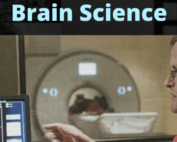New procedures training through well-designed video is an essential time-saver when your stakeholders or employees need to implement new policies, rules, or procedures.
But not any video will do in getting people to adopt the new procedures. In fact, you could end up having the opposite effect to what you intend if learners forget key elements, cannot assess the relative importance of different components, or end up resisting the change.
Strong instructional design is critical for new procedures training
Strong instructional design within the videos will facilitate the adoption of change, saving you time, money, and headaches later. So, make sure you attend to the basics: make clear what they will learn at the beginning and recap what they learned at the end. In addition, you’ll want to organize the video into chunks covering one learning element at a time.
Once you have a well-designed learning structure, most trainees can proceed independently. If anything is unsure, they can return to specific sections to confirm understanding. They can even return to the videos at a later time when they are in the midst of the new procedure to check that they are doing it right. (Thus, it is important to keep the videos available in an easy-to-find location.)
Highlight key points
Your stakeholders or employees will likely be learning many new procedures at one time, through multiple videos and even through other modes of training. This makes it even more important to use effective design to highlight the most important points or sections in your videos. The medium of video provides the 
Express the reasoning and calibrate tone
Your team should keep in mind that the aim of your new-procedures training is to get learners to adopt the new procedures with as much care and 
Reduce learner overload
Perhaps the most significant factor in achieving effective adoption of new procedures through training videos is to reduce stress among your learners. Video is a good media choice, because you can blend video and audio to make learning feel more effortless.
Yet, there will be cases when the new procedure to be learned is hard and will exceed the working memory of nearly all of your learners. Research of Chen, Kalyuga & Sweller (2015), shows that including a “worked example” is a great way to teach that more complex content. At around 3:10 in this video, you’ll see one of these “worked examples” concerning Truck Travel Time Reliability (TTTR).
The explanation and animated solution boils down the complex concept which would be stressful and time-consuming to wade through in print.
This agency’s training agenda included many new transportation performance management (TPM) requirements and procedures resulting from Federal legislation. Not everyone who needs to will easily understand this content. However, effective video training simplifies this content for people with differing levels of knowledge, skills, abilities, and time–while encouraging trainees to go deeper by exploring linked references or more detailed trainings, as needed. For a Federal agency responsible for the law’s implementation, it will always be critical that stakeholders across the country understand what changed, why it changed, and how to comply.
New procedures training for other topics, including COVID-19
Although this video concerns transportation, videos that provide training on other new procedures such as those involved with COVID-19 safety and re-opening can be done in a similar manner. To learn more about how MiniMatters video animation experts can work with your training team, call us at 301-339-0339 or request an estimate.








